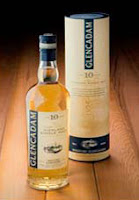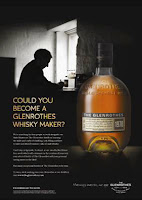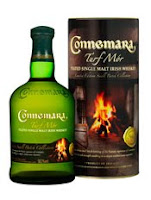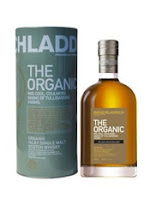 Glencadam is a little known distillery that is located in the eastern Highlands town of Brechin, which lies between Dundee and Aberdeen. It was founded in 1825 and is the last remaining distillery in a once rich whisky producing area. It has a renowned history of producing and supplying whisky to some of Scotland's biggest blending houses, with Glencadam historically forming an important part of top selling blends such as Ballantine's and Teacher's. Today their whisky is the cornerstone of the Angus Dundee blended range of whisky. Angus Dundee Distillers took over the distillery and reopened it in 2003. It had been closed by the previous owners in 2000, but everything was kept intact so that production could restart immediately (this is called 'mothballing'). They soon had Glencadam running back at full capacity, which is 1.4 million litres per year, and built a blending centre on the site in 2006.
Glencadam is a little known distillery that is located in the eastern Highlands town of Brechin, which lies between Dundee and Aberdeen. It was founded in 1825 and is the last remaining distillery in a once rich whisky producing area. It has a renowned history of producing and supplying whisky to some of Scotland's biggest blending houses, with Glencadam historically forming an important part of top selling blends such as Ballantine's and Teacher's. Today their whisky is the cornerstone of the Angus Dundee blended range of whisky. Angus Dundee Distillers took over the distillery and reopened it in 2003. It had been closed by the previous owners in 2000, but everything was kept intact so that production could restart immediately (this is called 'mothballing'). They soon had Glencadam running back at full capacity, which is 1.4 million litres per year, and built a blending centre on the site in 2006.A new range
This 10 years old forms part of a revamped range of single malt whiskies that were released by Angus Dundee in mid 2010. It joins a 15 and a 21 years old in the core range and these are to be supplemented by additional limited releases, of which the current two are the 12 years old Portwood (finished in Port casks, unsurprisingly!) and the 14 years old Sherry Finish. All of the new range are to be bottled at a 46% ABV, which is a higher strength than previous bottlings from Glencadam, and are not chill filtered. For an explanation of chill filtration - click here for our 'Explain About ...' post. This 10 years old is available in specialist whisky and liquor retailers and should cost £30-35 a bottle.
Our tasting notes
The colour of this Glencadam 10 years old is a light yellow gold and the nose is light and fresh, yet intense. There are a number of very pleasant and fragrant aromas that are present - predominantly vanilla, honey and cereal grains. With time, further notes of dried grass (think of hay), crisp green fruit (especially pear and apple) and oak (imagine pencil shavings or sawdust) start to come through and develop. After approximately five minutes in the glass a distinct note of custard powder is evident. The palate, like the nose, is simple but very well constructed and full of strong characteristics. The whisky is fresh, vibrant and makes your mouth water with an initial note of striking lemon zest. Then some sweeter flavours appear, such as the pleasant honey, vanilla and green fruits from the nose. Again, further notes develop with time - some shortbread, malty cereal grains and zingy, tangy sherbet. The finish is also tangy with plenty of initial vanilla and honey giving a good sweetness. However, it then becomes much drier and woodier with oak and ginger spice coming through.
What's the verdict?
This Glencadam 10 years old is a lovely whisky that exhibits characteristics classic ex-bourbon cask maturation. It's lightness, freshness and vibrancy would make it ideal as an aperitif dram or in hot weather. Glencadam has always been said to be an under rated distillery, but the classical nature of the whisky should gain it plenty of new fans and we can't wait to now try the other whiskies from the new range. A delightful dram.













